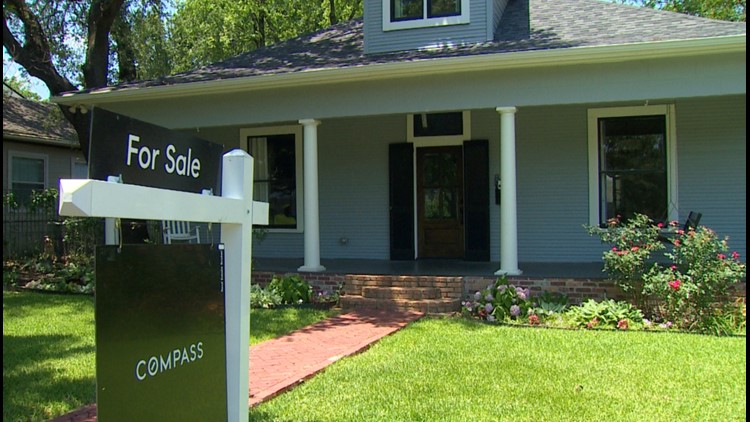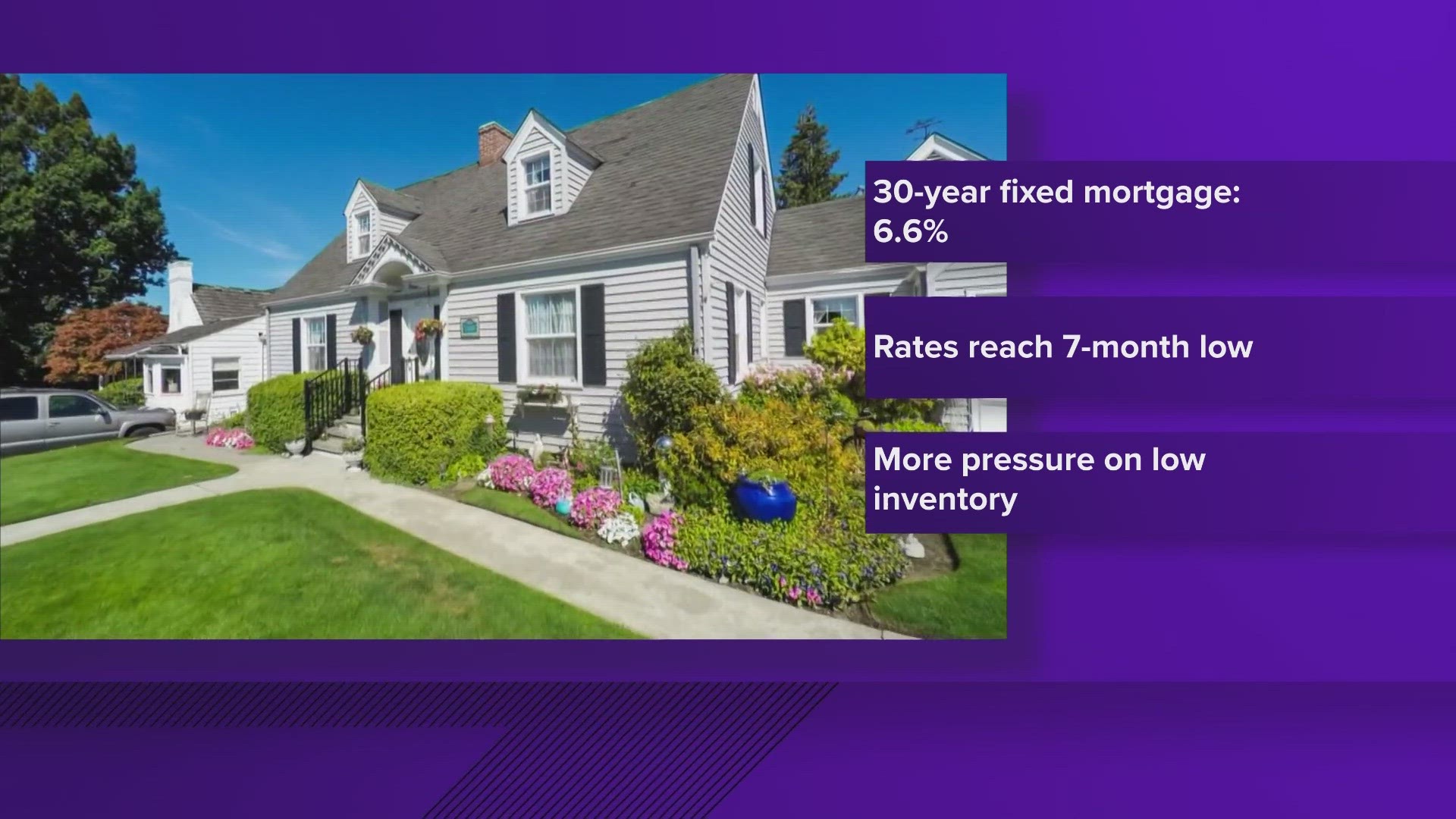DALLAS — This story originally appeared in the Dallas Business Journal, a WFAA news partner.
Dallas-Fort Worth has shifted to a buyer’s market for homes.
That’s according to the latest Buyer-Seller Market Index released today by home loan provider Knock.
DFW moved into buyer territory for the first time since the housing market caught fire in 2020, ending October as the 10th most favorable buyers’ market in the nation.
Austin is the only other buyer’s market in Texas right now, ranking 4th most favorable for buyers.
Phoenix ranked as the top market in the nation for buyers, San Francisco ranked second, and Salt Lake City, Utah, ranked third, according to the index, which analyzes key housing market metrics to gauge the degree to which the nation’s 100 largest markets favor home buyers or sellers.
Of the 100 largest markets nationwide, 51 are sellers’ markets, 39 are neutral and 10 favor buyers.
In DFW, the inventory on the market in October was up 48.2% from October 2021, to 15,635 homes. In the comparatively smaller Austin market, the inventory was up 70.2% year over year in October, to 7,610 homes.
The median amount of time for a home to sell is 25 days in DFW and 38 days in Austin, according to the index.
The nation's 10 buyers' markets tend to have longer-lasting inventories and higher days on market.
All 100 markets with the exception of Fayetteville, N.C., moved at least marginally toward favoring buyers over the last 12 months — a trend that will continue over the next year, according to Knock’s index.
The U.S. housing market will favor buyers in 2023, with 26 of the 100 markets forecast to emerge as buyers' markets by October 2023.
Fast-forwarding a year, DFW is predicted to be the nation’s sixth-best market for buyers, with inventory up another 56.4% to 24,461 houses on the market in October 2023.
Austin will remain the fourth-best buyer’s market a year from now, and the pendulum will swing to favor buyers in San Antonio (predicted to be 16th-best in October 2023). Houston, is forecast to remain a seller’s market in October 2023.
Both DFW and Austin are projected to shift from “favors buyers” to “strongly favors buyers” within the next year, according to Knock.
Rewinding a year, all four major metro markets in Texas were classified as seller’s markets.
Despite the continued movement toward buyers nationwide, today’s hottest sellers’ markets are forecast to remain resilient, with many of them staying in seller territory, and some even gaining momentum over the next year.
Fayetteville, followed by Winton-Salem, N.C.; Columbia, S.C.; Hartford, Conn.; and Rochester, N.Y., topped the list of best markets for sellers through October 2023.
The shift toward buyer favorability is occurring in neutral and already-buyer-friendly markets, while the strongest sellers’ markets are cooling at a slow pace, according to the index.
By October 2023, 26 U.S. markets are forecast to be buyers’ markets, 38 will be in seller territory and 36 will be neutral.
The shift toward buyers’ markets is being driven by a number of key housing market metrics, most notably declining home sales.
Just 127,000 homes were sold in the 100 largest U.S. housing markets in October, down 51.4% from 262,000 a year earlier and a record low of any month since November 2016, the beginning of Knock’s Buyer-Seller Market Index. The median home price in the U.S. was $388,000, compared to $360,000 a year ago, while average days on market increased to 19, up a full week from October 2021.
The average nationwide sale-to-list ratio, which measures how close homes are selling to their asking price, was 99% in October, unchanged from September and down from 101% a year ago.
“The housing market has borne the brunt of the Fed’s attempt to control inflation,” Knock co-founder and CEO Sean Black said in a statement. “At the same time, it has continued to demonstrate its resiliency.”
Sellers still hold the advantage in most of the nation’s largest metros, and many will continue to favor sellers well into 2023, Black noted.
“With interest rates stabilizing in recent weeks and less competition, buyers may begin to re-enter the market over the next few months,” he said, “which could result in a return to a more normal spring home-buying market.”
Across DFW as a whole, home prices were up year-over-year in October, but down for the third straight month.
The median DFW home price in October was $394,900, up 12.3% from October 2021. But the $394,900 median last month was down from the $399,000 median price in September and the $405,000 median in August, according to the latest Re/Max National Housing Report.
Zooming in geographically, home prices across DFW have dropped sharply from their highs this spring in many cities — especially those where the biggest run-ups occurred.
Median home prices are down $152,000 in Frisco, $115,000 in Plano, and $110,000 in Irving from their springtime highs, according to a city-by-city analysis by AgentStory, a tech company that pulled home price data at the request of the Dallas Business Journal.
In Frisco, the median home price stood at $598,000 in October, down from a peak of $750,000 in March. Plano’s median home price fell to $450,000 last month from a high of $565,000 in April. And in Irving, the median price was $374,700 in October — down from a peak median home price of $485,000 in May, but up from $340,000 in September.
Geographically across the nation, in October, six of the top 10 sellers’ markets were in the South, three were in the Northeast, and one was in the Pacific Northwest, according to the Buyer-Seller Index.
The average sale-to-ask price ratio declined to remain below 100% in all of October's buyers' markets with the exception of San Francisco, where the average sale still exceeds the asking price by 1%.
The index comprises six measures: the ratio of average sale to asking price, number of homes sold, number of active listings, median days on market, median sale price and the rolling supply of homes in a given month.



